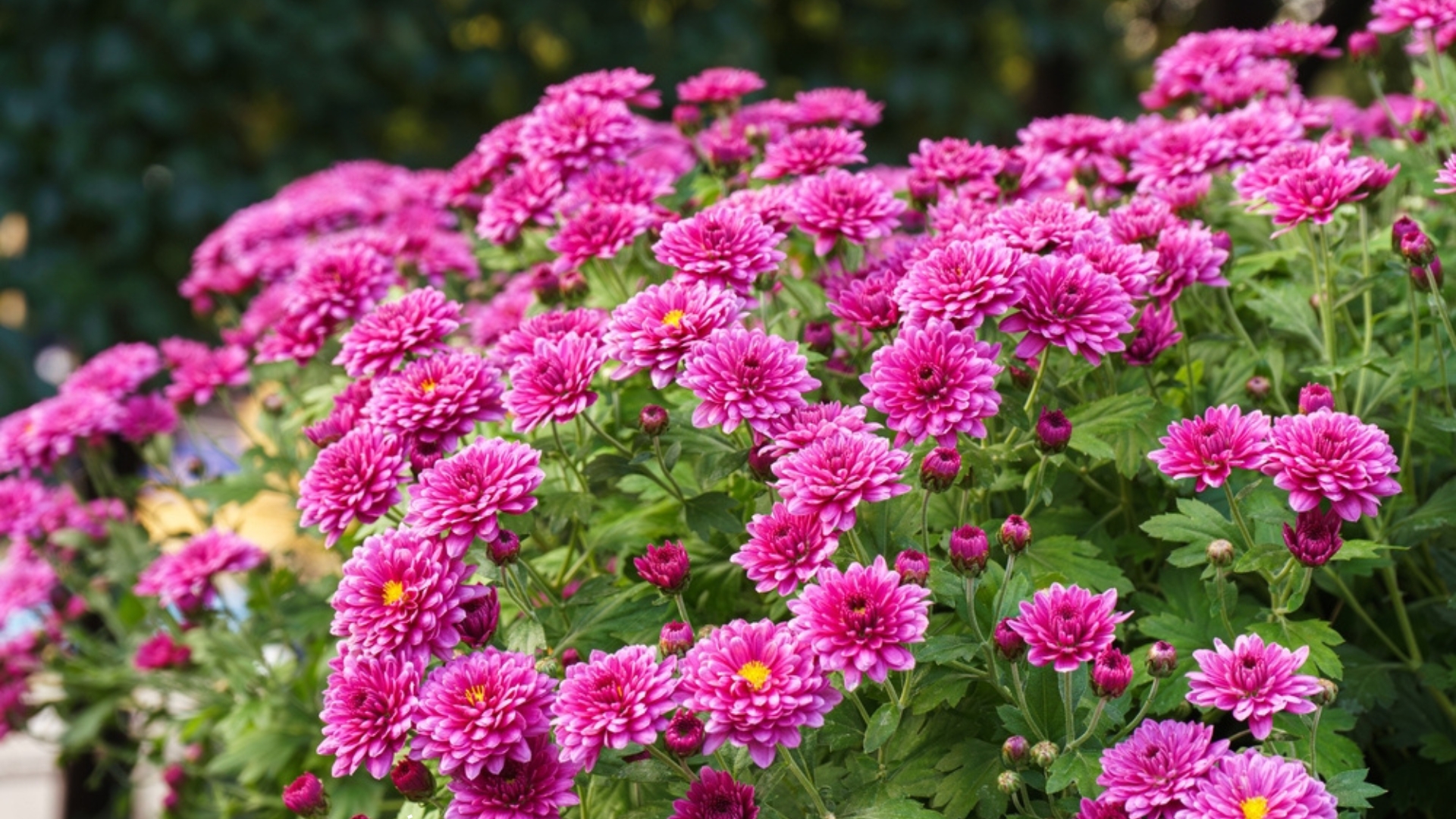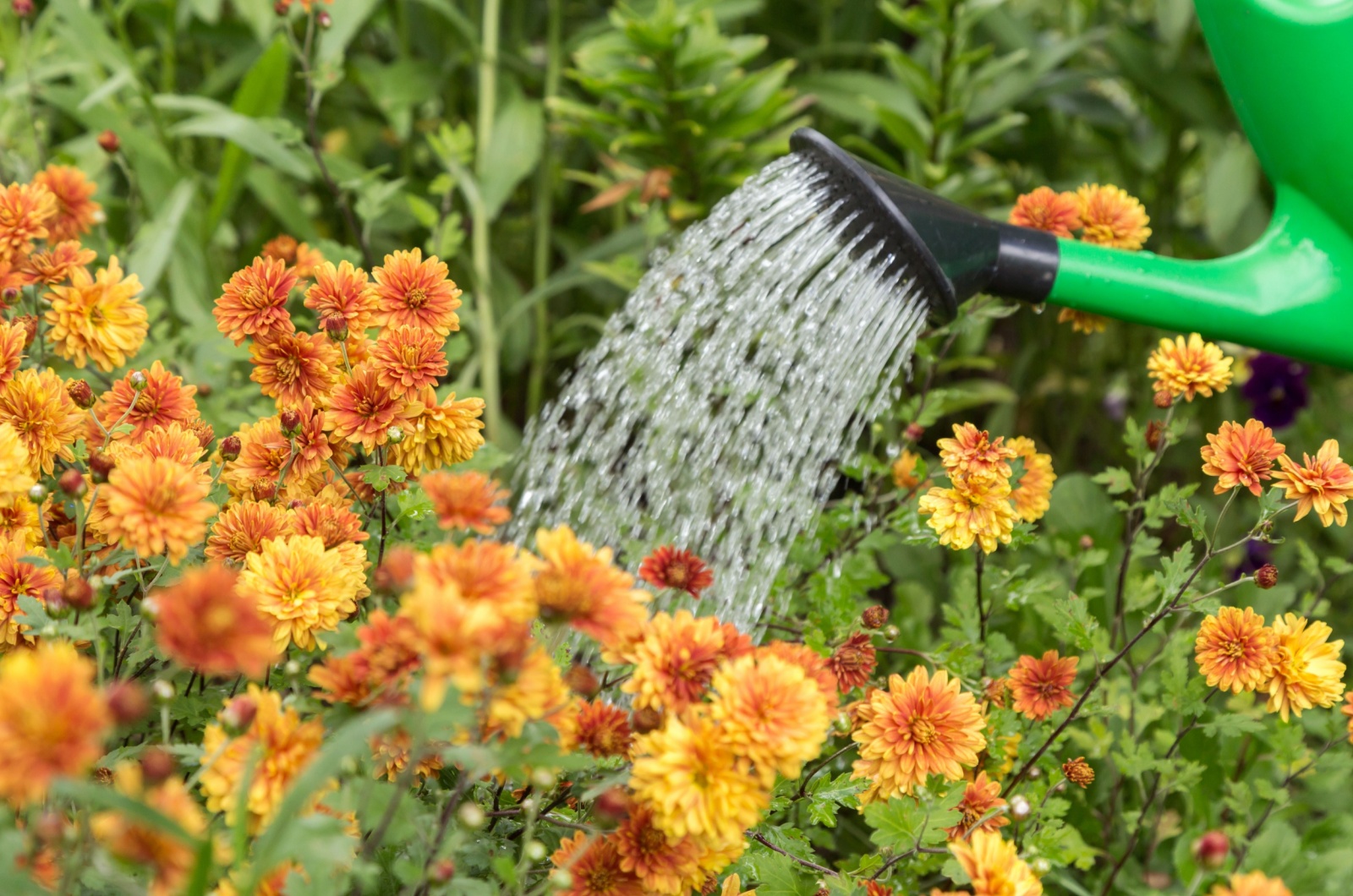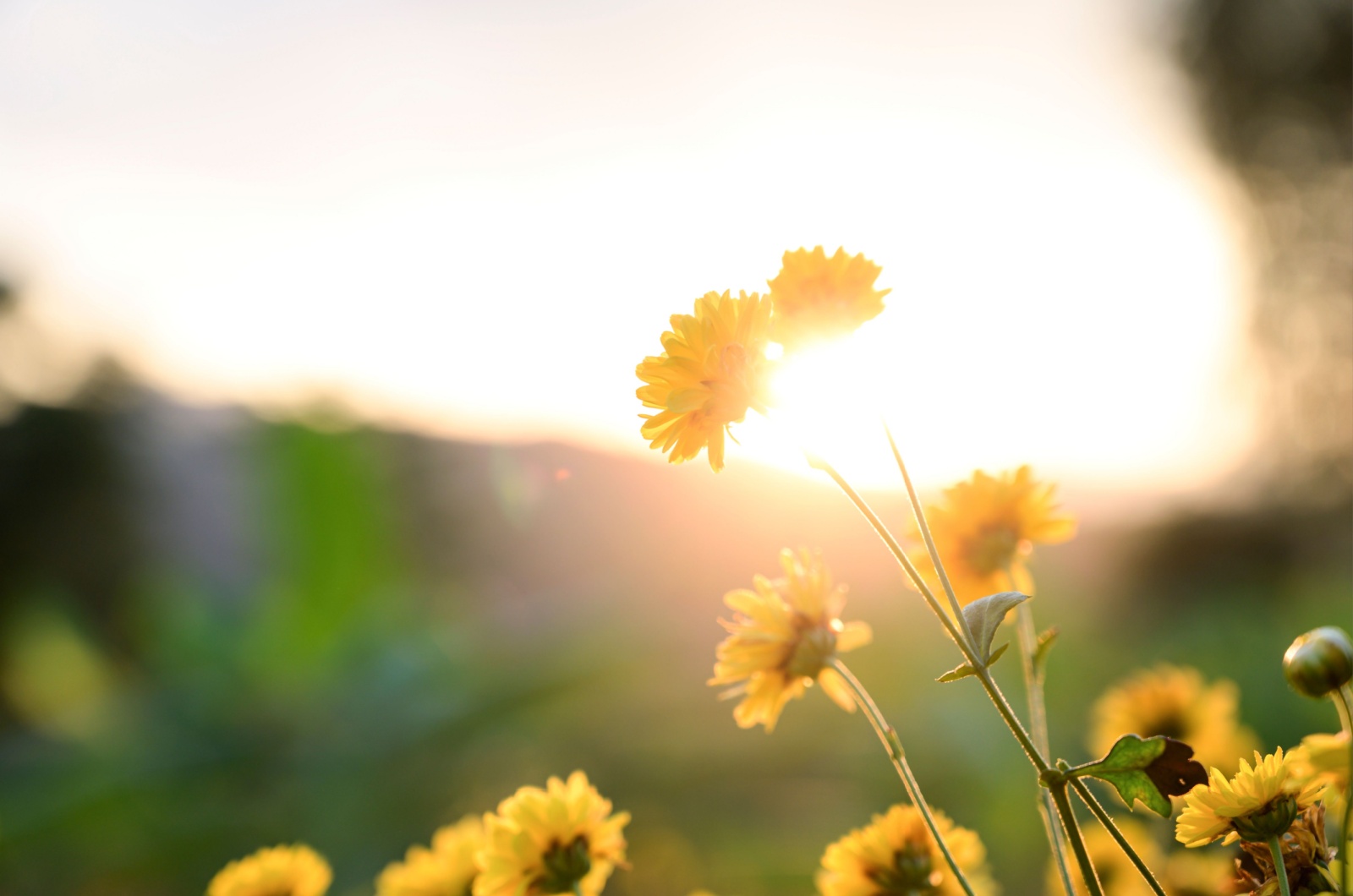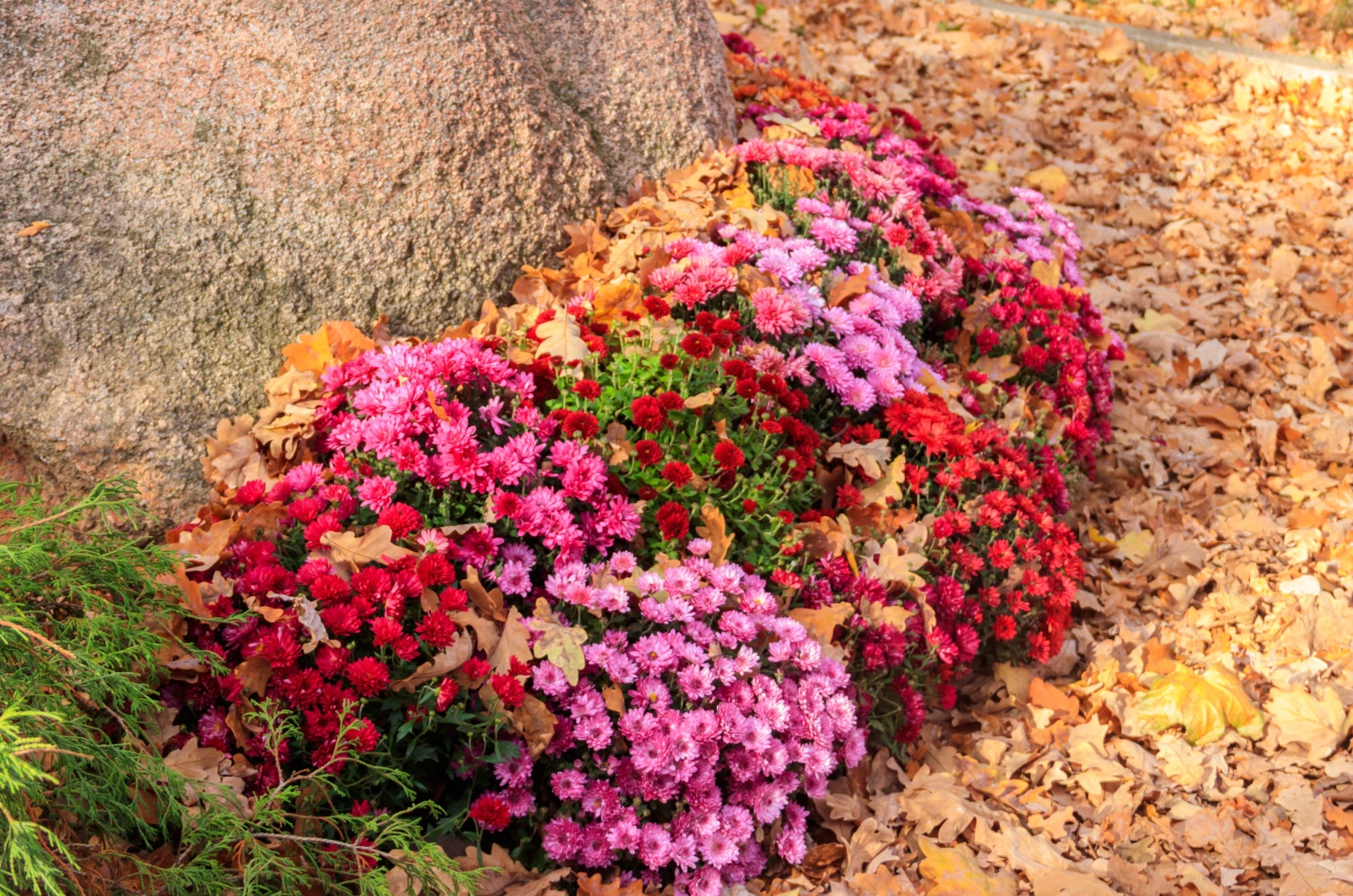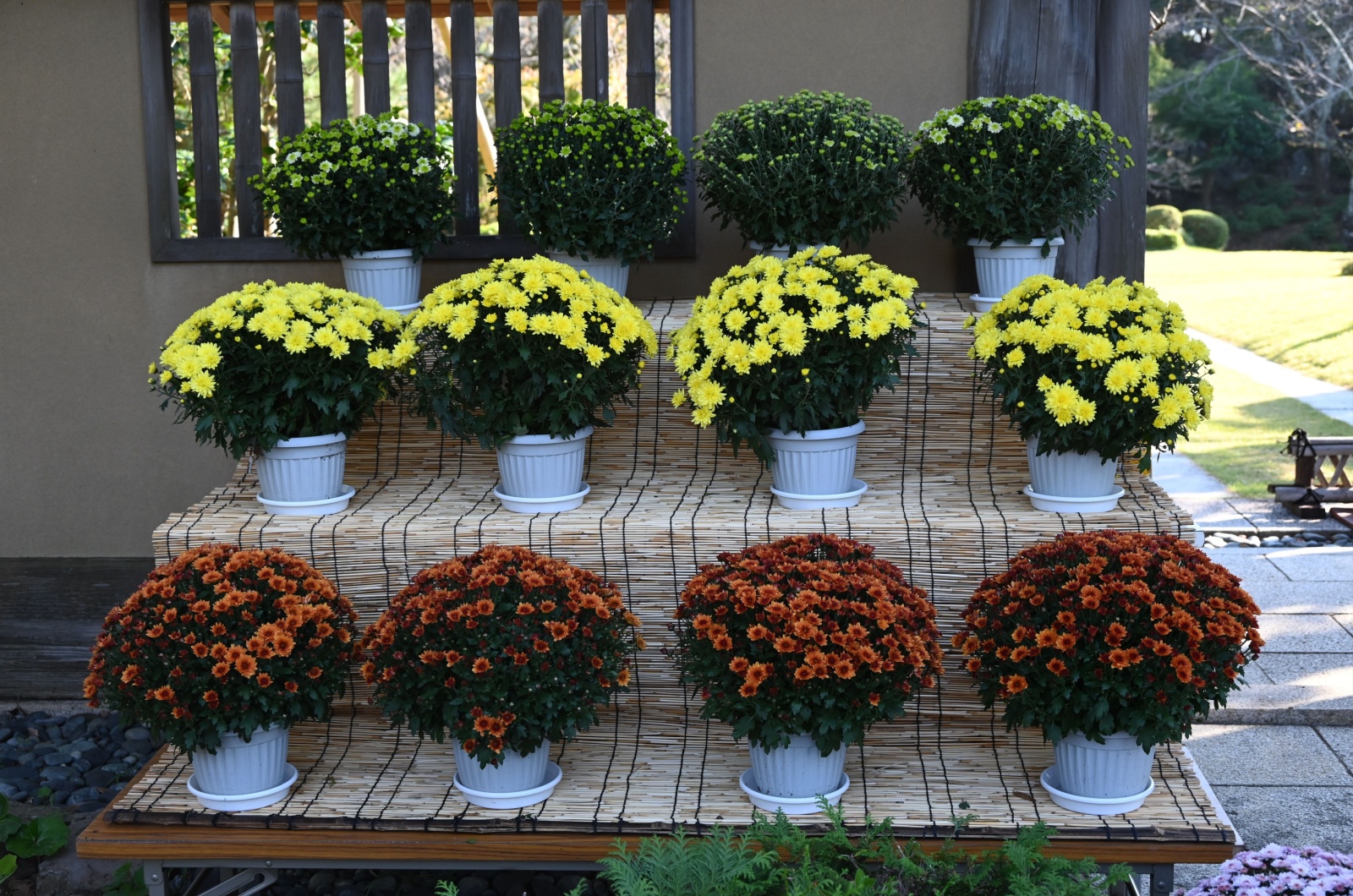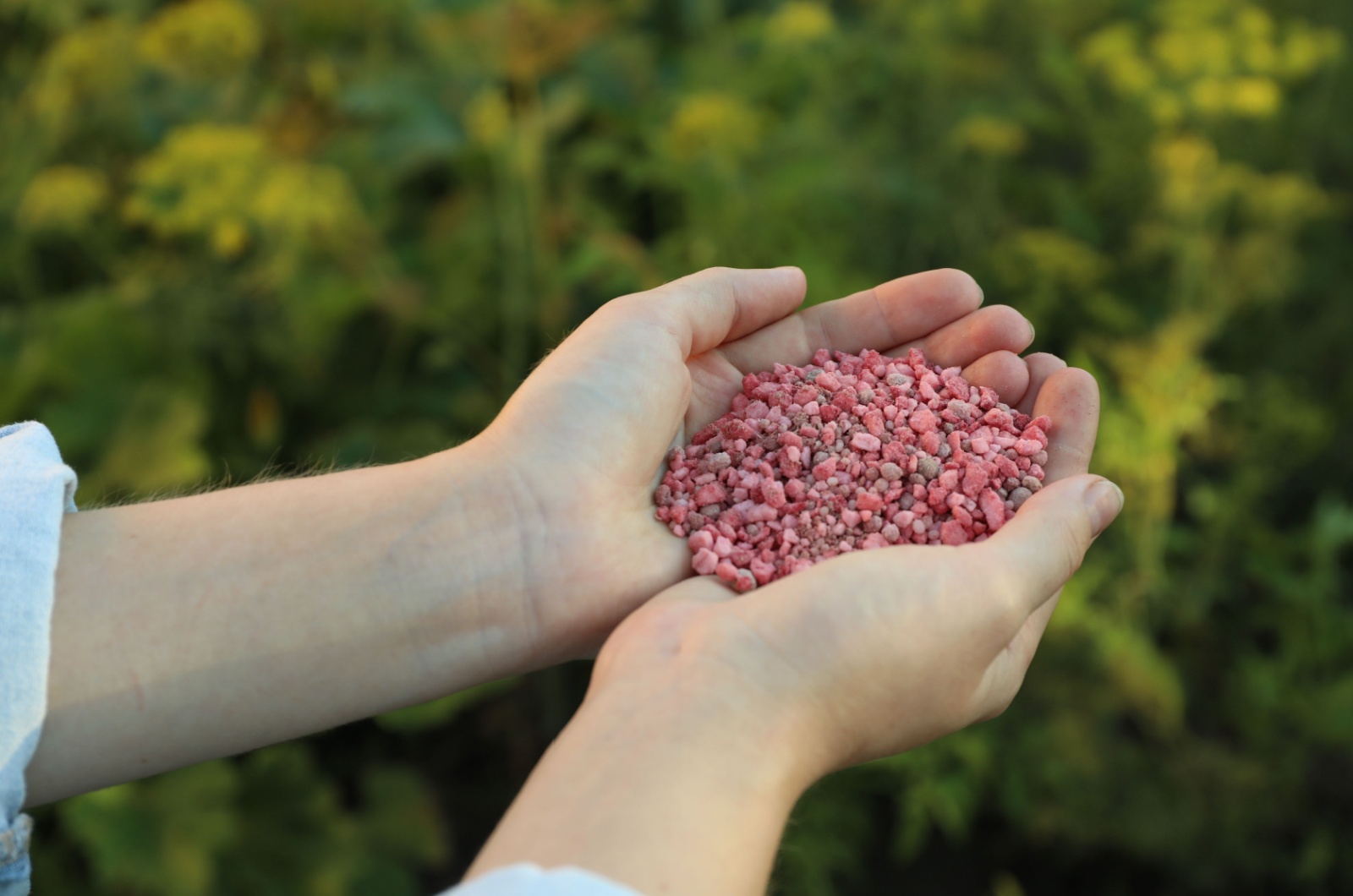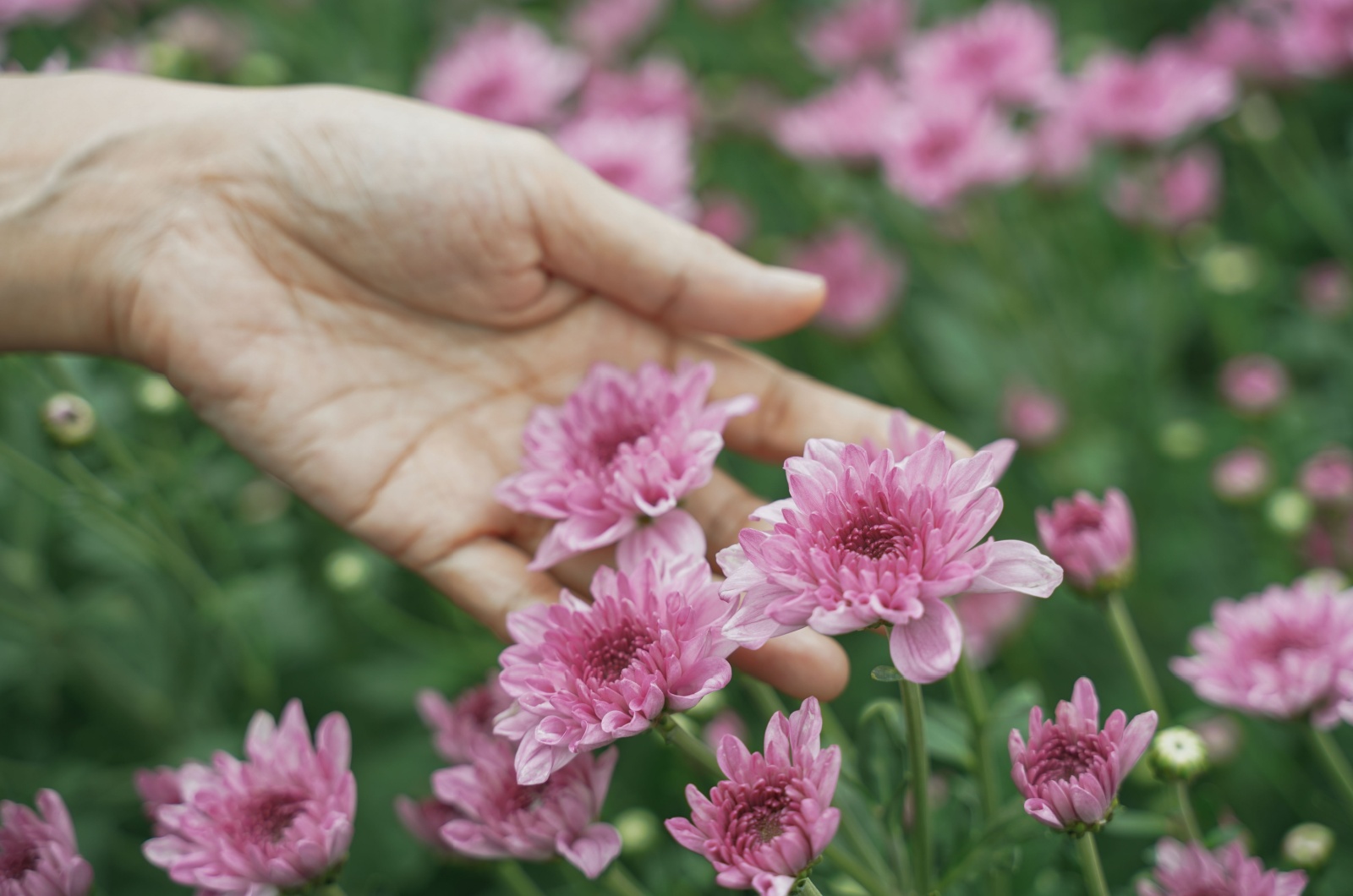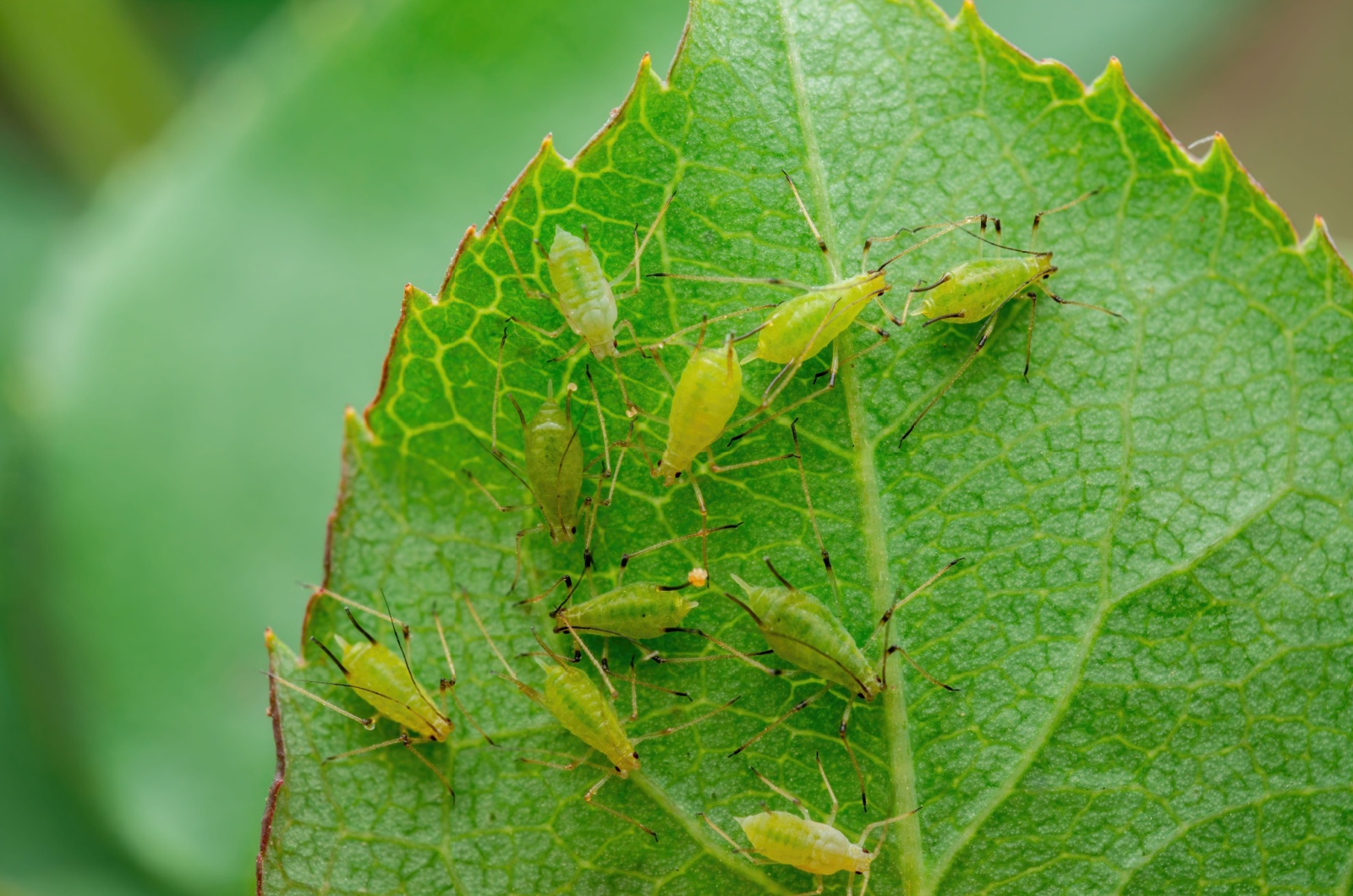Mums aka the stars of fall gardens owe their spotlight to their magnificent blossoms. For most gardeners, they’re as easy as pie to maintain, rarely running into any trouble.
But rarely doesn’t mean never, so if your mums fail to thrive this season, trust me, you aren’t the only one.
You should know that many factors affect the growth of these stunning plants, and if you get just one wrong, things can quickly go south.
Don’t worry, I’ll walk you through the most common mums growing mistakes – don’t leave any stone unturned!
1. A Poor Watering Routine Could Drown Your Success
Of course, the first and the most common issue is an incorrect watering regime or method. First, let’s discuss the watering schedule of chrysanthemums.
These plants won’t settle for less than an inch of water per week, which means you’ll need to irrigate them consistently.
If you don’t give them enough water, their stems will turn woody, resulting in fewer blossoms.
A rule of thumb is to give your mums water whenever the soil dries out. When watering, give them a good soak; saving water isn’t really s priority if you grow mums.
Another mistake you may be making is watering your chrysanthemums from above. If the leaves are damp, the notorious fungus that causes powdery mildew could quickly settle in.
If your mums develop gray spots on the leaves and they start falling off, powdery mildew is to blame! You can fix powdery mildew by pruning the affected leaves and applying neem oil.
But the best way is always prevention, so make sure to water your chrysanthemums only around the base!
2. Too Much Shade Or Too Little Could Also Be The Culprits
All blooming plants need sun to reveal their blossoms. For mums, receiving indirect sunlight for about 4-6 hours per day works best.
If the spot where you keep your mums is getting too much shade, your mums will most definitely fail to thrive. You’ll need to transplant them or move the container if your mums are potted.
But be careful with the sun! Too much sun can have the same effect on your mums as too little, especially in warmer regions.
Heat stress caused by intense afternoon sun may lead to poor growth and fewer or even no blossoms.
You’ll need to find a spot for your mums so that they receive full sun in the morning but partial shade during the afternoon.
3. Never Leave Debris To Rot Around Your Mums!
Leaves and blooms fall off plants, and while this is a completely natural process, you should be very careful!
Unfortunately, chrysanthemums are pretty susceptible to fungal diseases, so any rotten debris around the base can lead to terrible consequences.
What to do? Clean, clean, and clean some more! As the winter approaches, your garden beds must be completely clean of debris, especially the leaves and twigs that fall off during the fall months.
4. If Your Containers Don’t Have Holes, Your Mums Are In Trouble
Chrysanthemums can thrive in containers, which is great news for those who have limited space outdoors.
But… selecting a container without drainage holes in the bottom can cause your mums to suffer. You must purchase a pot with plenty of drainage holes or drill a few yourself.
If you skip this, the soil will become waterlogged quickly and you can forget about flowers. If you leave the soil in these conditions for too long, you can wave goodbye to your mums entirely.
5. Skipping Feeding Leads To Poor Growth
Have you fertilized your mums this season? NO? Well, that’s where the problem lies. Your garden chrysanthemums need regular fertilization during the growing season.
They need nitrogen to produce the healthiest leaves and a lot of potassium to display their gorgeous blossoms.
Small mums, fewer blossoms, and yellowing are the most common signs of nutrient deficiency in chrysanthemums.
Always apply the first round of fertilizer in spring when the danger of frost ends. Keep adding fertilizer until the mid-summer so that new growth doesn’t occur once the temperatures decrease.
If you’re a gardener who often forgets things, your best bet is to use time-release fertilizer once during the growing season.
6. You’ve Been Pinching Back Your Mums Too Much Or Too Little
Deadheading your mums is a must, and the same goes for pinching back. With this technique, you get round and full chrysanthemums with an abundance of blossoms.
What you get if you skip this is a lack of blooms and leggy stems.
Start pinching back once your chrysanthemums reach about 6 inches. Take your garden shears (or use your fingers) and remove approximately an inch of new growth from the upper part of each stem.
But be careful not to pinch back too much! You need to do some math. Take the estimated time of mums blooming and make sure to stop pinching back about 100 days before.
The last thing you want to do is remove buds that’ll reveal blossoms once the fall arrives.
If you grow chrysanthemum varieties that bloom in September, you’ll need to stop pinching back in early July. For October chrysanthemums, you’ll need to stop pinching back at the end of July.
7. Where There’s Trouble, Aphids Aren’t Far Behind
And last but not least, your mums may be infested with annoying aphids. They’re known for their ability to suck the sap from plants until the leaves and blooms are completely destroyed.
The biggest problem is that these creatures are super tiny and spotting them may seem like mission impossible. But if you notice too many ants on your chrysanthemums, you should take a closer look at the foliage.
Aphids leave a substance and ants quickly come to feed on it. You’ll need to act immediately since aphids reproduce fast and an aphid or two could quickly become a colony.
Shower your chrysanthemums thoroughly to remove as many aphids as possible. But remember, allow the plants to dry out well since damp conditions on foliage lead to powdery mildew.
There are many common ingredients that can help you destroy aphids, such as cinnamon. If you don’t want to go organic, you can always use insecticides.
I deal with aphids by using the companion planting method, which basically means planting varieties that repel these insects. Marigolds and lavender are my favorites!
If your mums missed the mark this season, now you know what went wrong. Use our tips and tricks to get the best out of your chrysanthemums for the seasons to come!

